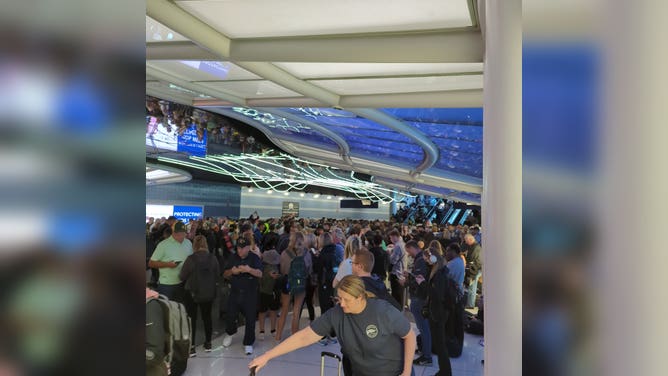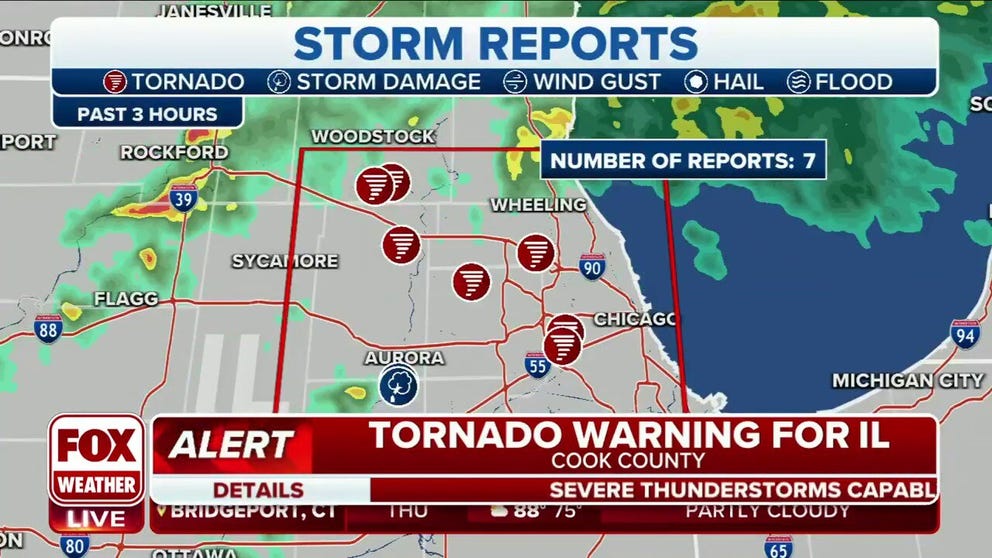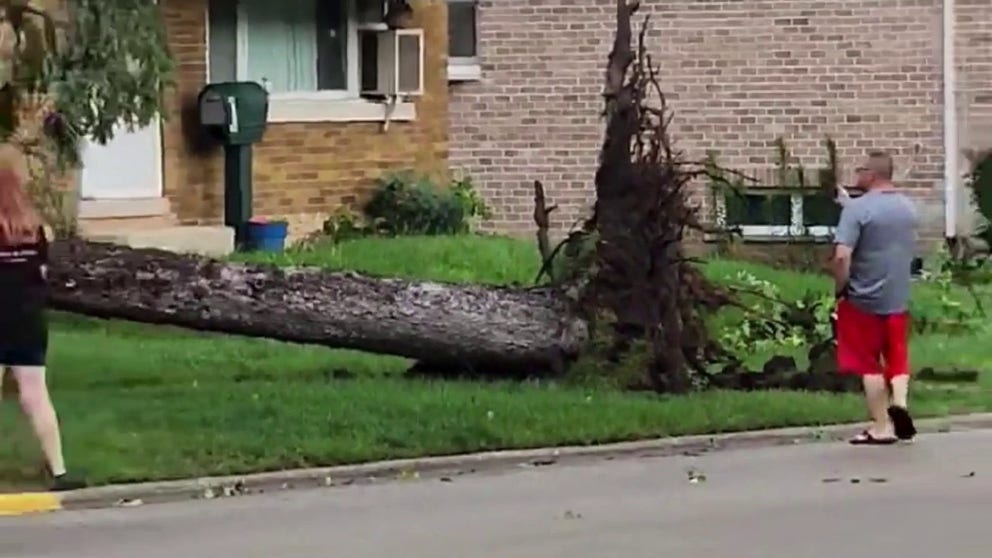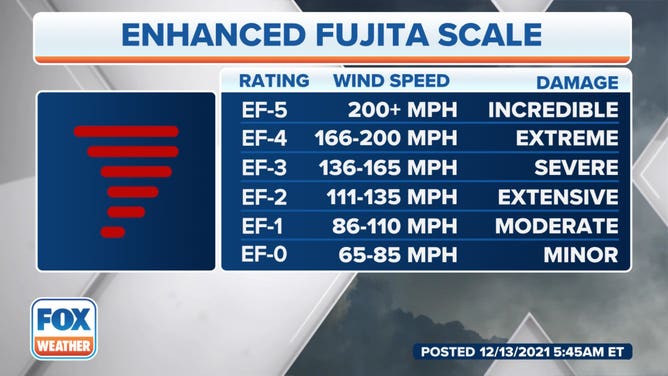Videos show tornadoes marching across northern Illinois, Chicago metro during Wednesday’s severe storms
Several homes were reported to be damaged, and trees were down following the severe weather. Nearly 10,000 power outages were reported throughout the region, and travelers at Chicago O’Hare International Airport were ushered into safety.
At least 5 initial reports of tornadoes throughout northern Illinois, Chicago meto
NOAA's Storm Prediction Center received at least five reports of tornadoes that moved through northern Illinois on Wednesday evening.
CHICAGO – At least 11 tornadoes have been confirmed after a round of severe storms Wednesday produced twisters across the Chicago metro area and northern Illinois, damaging homes and downing trees.
The National Weather Service office in Chicago confirmed at least seven twisters touched down across northern Illinois. The strongest confirmed tornadoes happened in Burr Ridge and Elgin and were rated an EF-1 on the Enhanced Fujita Scale as of Thursday afternoon.
Passengers waiting on flights at Chicago's O'Hare airport said they were ushered into safety as a tornado was spotted damaging nearby warehouses, and Tornado Warnings were issued.
A ground stop was implemented for Midway and O’Hare, leading to hundreds of flights being delayed or canceled.
EF-2 TORNADO FLIPS CARS, LEAVES DAMAGE TRAIL IN SOUTH FLORIDA

Tornado Warning for Chicago O'Hare International Airport
(dmcalister1/Twitter / FOX Weather)
There were no initial reports of damage to concourses at the airports, but suburbs outside the city did not share the same fate with trees blocking roadways and cutting off power.
In Stickney, large trees were blown down during the storms, blocking sidewalks and damaging homes.
After the tornado sirens ceased and the rain cleared, residents toured the damage in the Cook County neighborhood.
And in nearby Indian Head Park, the roof and walls of at least one residential complex were heavily damaged during the same tornado-warned storms.
Suspected tornado damage in Chicago suburb
Video shows the aftermath after a tornado-warned storm moved through Stickney, Illinois, outside of Chicago.
One of the rarest sights came out of Elgin, Illinois, where residents reported at least two simultaneous tornadoes.
At least one of the tornadoes was on the ground for several miles and triggered the National Weather Service to issue several Tornado warnings.
PowerOutage.US reported more than 10,000 electric outages across the state, with many in the McHenry-Kane-DuPage-Lake-Cook County region.
HOW METEOROLOGISTS DETERMINE IF A TORNADO IS TO BLAME FOR STORM DAMAGE

A pair of tornadoes spotted in Elgin, IL.
(@ctoddjr/Twitter / FOX Weather)
During the next few days, it’ll be up to meteorologists at the NWS office in Romeoville, Illinois, to survey the damage and determine how many tornadoes formed.
Teams will span out to determine the twisters’ start and end points and then will work to estimate their width and extent of damage.
The tornadoes will then be rated on the Enhanced Fujita Scale, which ranges from an EF-0 to an EF-5.
Twisters that reach EF-0 or EF-1 status are the most common and have wind speeds upwards of 110 mph.
Despite the scope of Wednesday’s severe weather, there were no reported fatalities around the Chicago metro.





